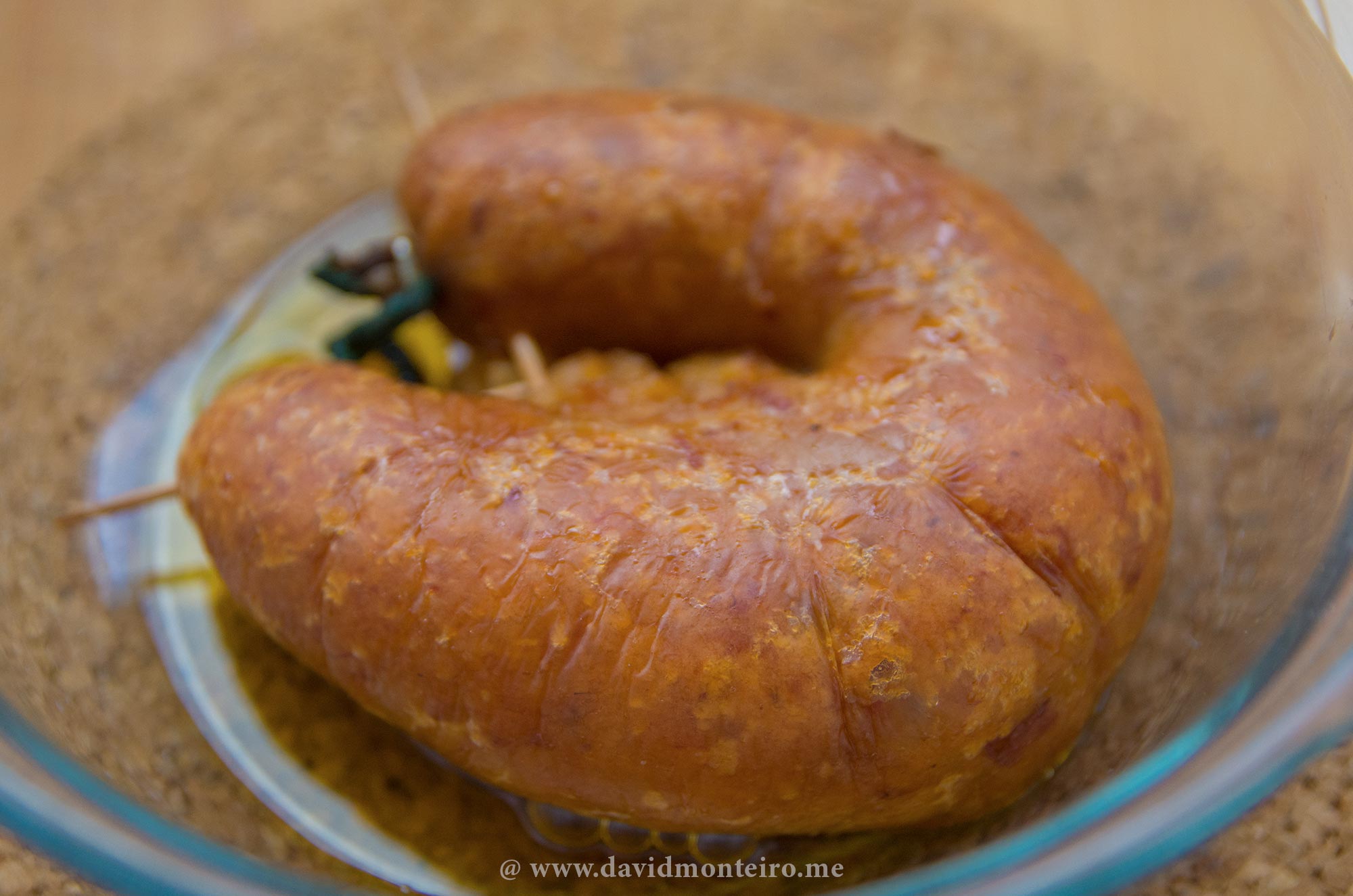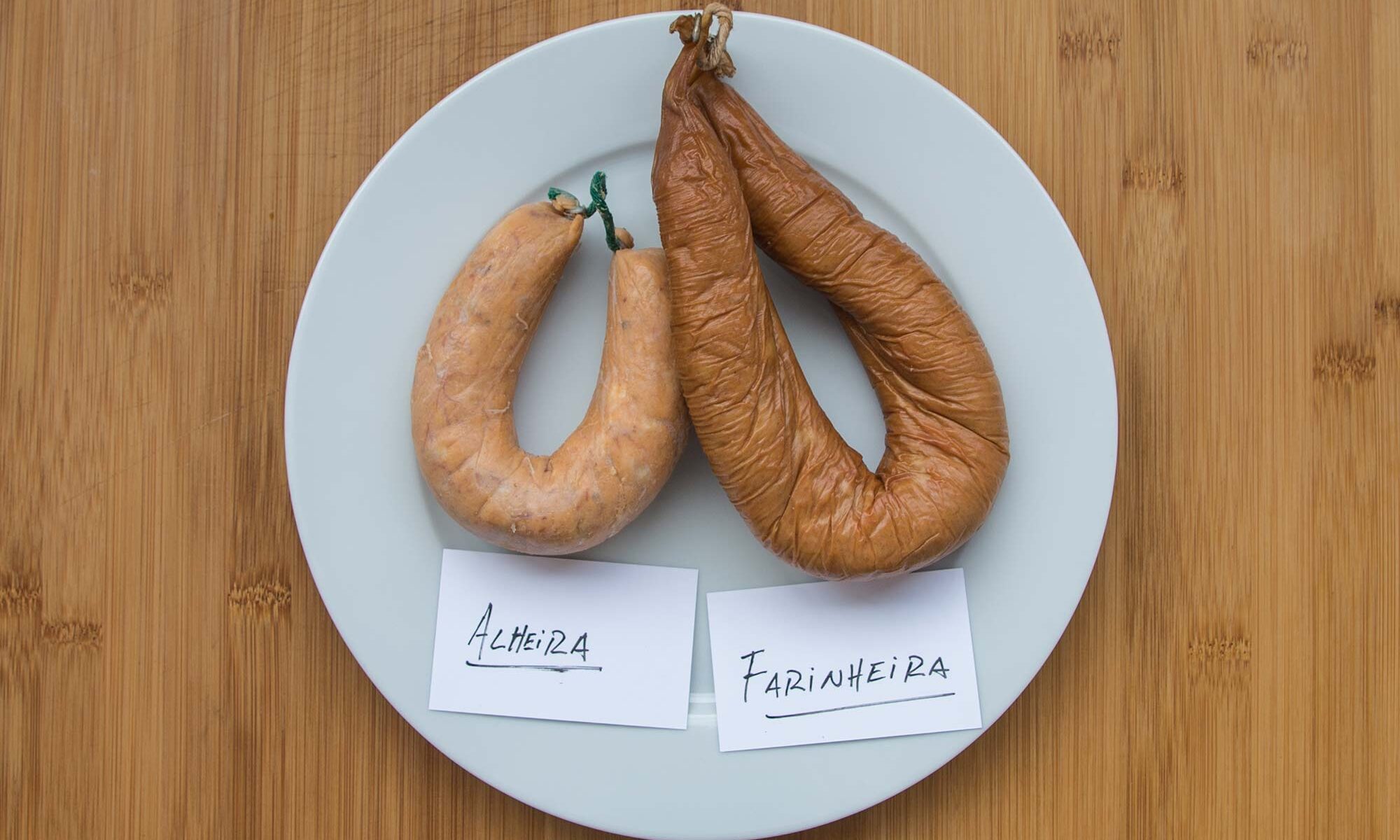Alheira or farinheira, two Portuguese sausages
Alheira and farinheira, unique to Portugal, are two distinct sausages.
During my guided tours, we often discuss unique aspects of Portuguese cuisine, including these sausages’ origins, differences, and serving methods.
Despite extensive research, I haven’t reached stable conclusions about their origins and production methods, so expect potential revisions to this article.
For those unfamiliar with these delicacies, refer to the accompanying photo for visuals. Below, I outline their contents and variances.
Historical background

Historical records suggest that Jews in 15th and 16th century Portugal invented alheiras and farinheiras during persecution. Unable to consume pork due to religious restrictions, they crafted sausages from alternative meats like chicken, turkey, or beef.
Attention: If you abstain from pork consumption, approach alheiras and farinheiras cautiously. Most available in the market contain pork or its by-products.
Inspect the labels of three common alheira packages for terms like “porco” (pig) to confirm pork content. Despite claims to the contrary, many alheiras do contain pork.

Alheira and farinheira – what do they contain?
Alheiras usually comprise pork tripe that has been stuffed with a blend of bread and assorted meats, occasionally incorporating pork as well.
This unique combination lends them their distinctive flavor and texture, making them a beloved delicacy in Portuguese cuisine.
Alheiras are commonly baked or fried and served as starters or main courses with rice, chips, and fried eggs.
Farinheira, in contrast, does not contain pork meat; however, it does include pork fat combined with raw flour, paprika, and wine.
This blend gives it a rich and savory taste, distinguishing it from other sausages.
Farinheira plays a crucial role in Portuguese stew (feijoada), enhancing the dish’s flavor and texture.
Additionally, it can be enjoyed as a standalone snack, often served alongside scrambled eggs for a satisfying and hearty meal.

Although culinary innovations continually evolve, this text aims to differentiate between alheiras and farinheiras, enriching your understanding of these sausages.
Join me for a Évora and Monsaraz Tour – Alentejo and taste these sausages.
Enjoy your culinary exploration and let me know which one is your favourite.
David Monteiro

